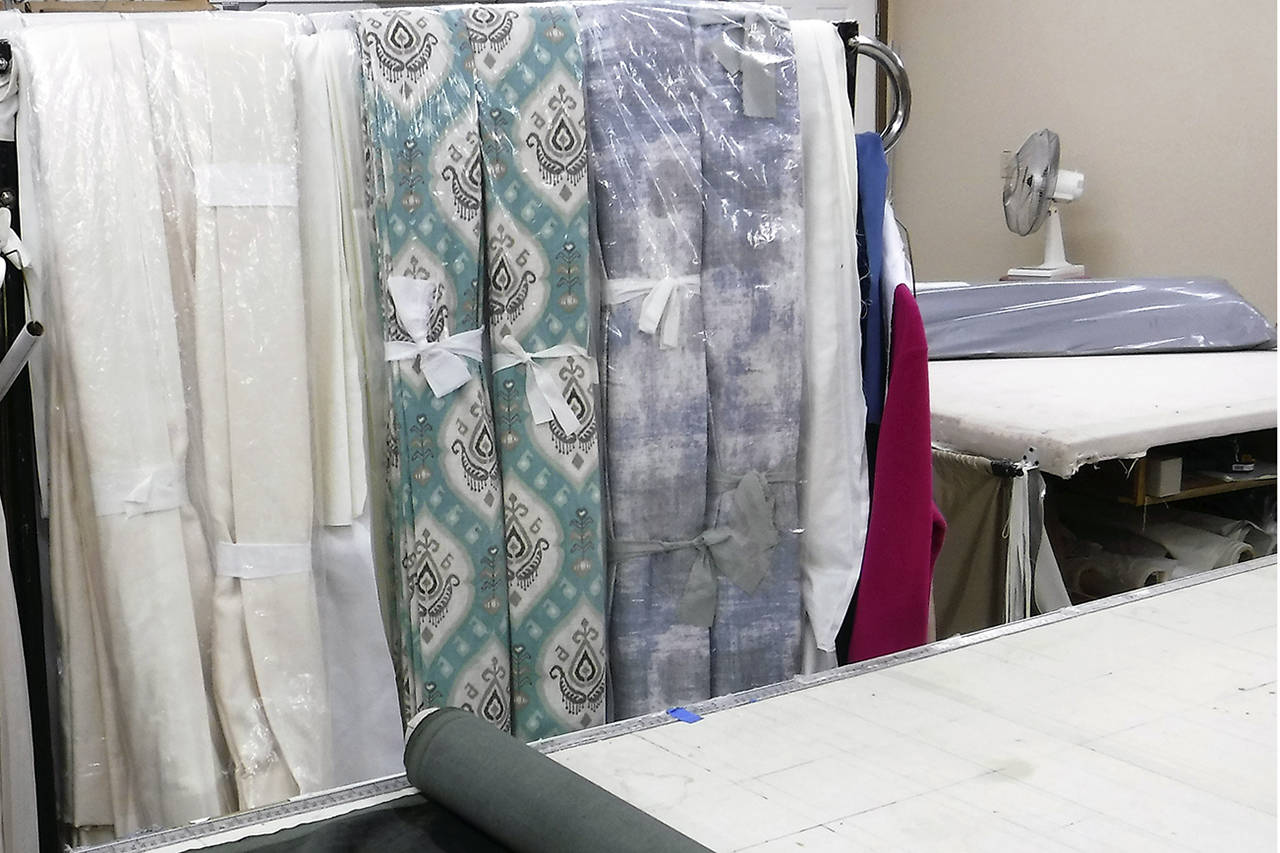Home
By Mitchell Chapman
Having custom draperies made for your windows is a big decision. It can be a fun project to add another design layer to your home, but it will take an investment in time and money to bring your vision to reality.
The ideal way to start your search is to visit a showroom. There, you will be able to discuss your design vision and see different fabrics and trim details. Take your window dimensions with you, as well as some photos of the windows. The workroom can give you an estimate of the fabric yardage you will need. They can also provide an estimate of the cost to make your drapes.
On Grays Harbor, we don’t have easy access to different drapery workrooms. After a short internet search, I decided to meet with the folks at Pugerudes Draperies in Kent. They have a well-stocked fabric showroom and construct the draperies in their on-site workroom.
If you decide to move your project forward, the next step would be to schedule a home visit. The salesperson can only get accurate measurements with a home visit. If you already have curtain rods, they will be able to calculate the “finished length” of the drapes. If you don’t have any curtain rods, then the salesperson can suggest a suitable one and examine your windows to be sure they can be securely attached.
During the home visit, you can see how different fabrics will work in your space. The salesperson should be able to give you a firm price for your project at that time. Be sure to ask for it in writing.
It is common to pay a deposit on your order. It could be 50 percent of the project total, or maybe the full cost of the fabric.
DESIGN DECISIONS
Fullness — The quantity of fabric used in relationship to the width of the curtain rod. The standard fullness most people request is 1.5 to 2 times the width of the window.
Length — There are a few options to consider for length. You can have the drapes be about half-inch above the floor, which allows for pleated drapes to better maintain that “pleated” look. Some people want the drapes to be about a half-inch on the floor. This is helpful if you are trying to block out light or reduce window drafts. Still others want a “puddled” look, which means the drapes are made to have fabric collect on the floor. You can order any length you like, but keep in mind you do not want to create any tripping hazards.
Linings — You can line your drapes with any fabric you like. Typically, linings are white, cream or tan. You can get the basic privacy lining or blackout lining. Privacy lining comes in different weaves, so the tighter the weave, the more light is blocked out.
Interlinings — This is an additional lining between the fabric and the outer lining. The benefits are greater insulation value, perhaps some noise reduction and a fuller, more luxurious looking drapery.
COMMON REGRETS
Perhaps you have found the perfect fabric: a bold graphic print that complements your interior design. Keep in mind that this print may get lost when constructed into a pleated drapery.
Linen draperies look luxurious, but linen does wrinkle, and the only way to get the wrinkles out is by steaming them out.
Skipping the home visit — If you can’t get the salesperson to visit your home, you risk providing the workroom with measurements that are incorrect.
Buying the wrong size curtain rod — Remember, when the drapes are open, they will be stacked on the sides. If the curtain rod is only a few inches beyond the sides of the window, the drapes will block some of your view even when they’re open.
TODAY’S TRENDS
People are ordering draperies with “clean lines” that are more modern than the swags of yesterday. The triple- and double-pinch pleats are the most popular, followed by the Euro/ Parisian pleat.
People also are adding trims and tapes to the edges of their drapes for a little extra design detail.
I’ve had custom draperies installed in my last four residences. Draperies have a big design impact to our homes. It is important to remember that people in our area make them. It takes skill to create beautiful, well-made draperies. These people are true artisans. Support your local workroom!
Mitchell Chapman lives in Montesano and enjoys DIY renovations, interior design and home furnishings. He’s been an “armchair” interior designer for more than 25 years. He can be reached at GraysHarborHome@outlook.com.


